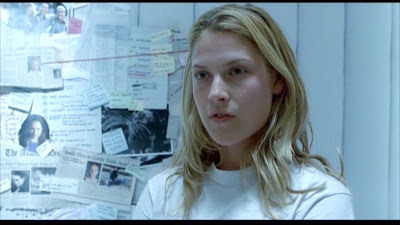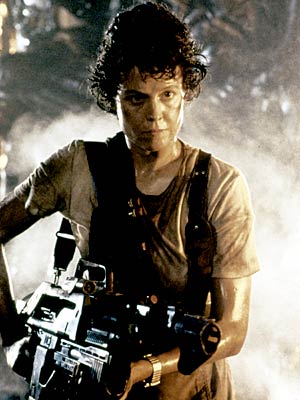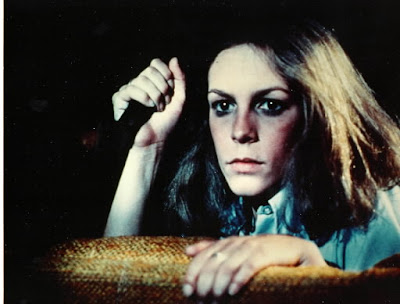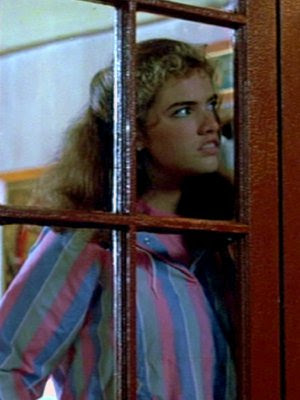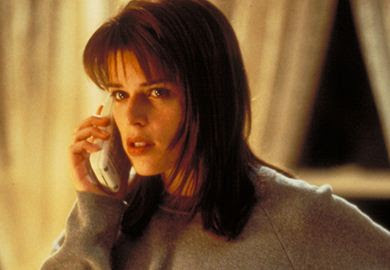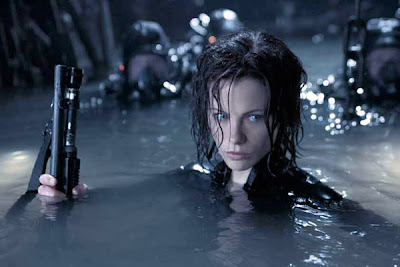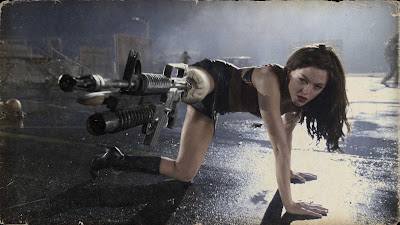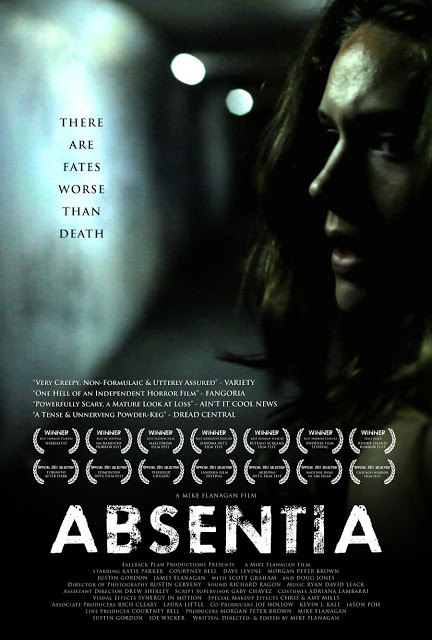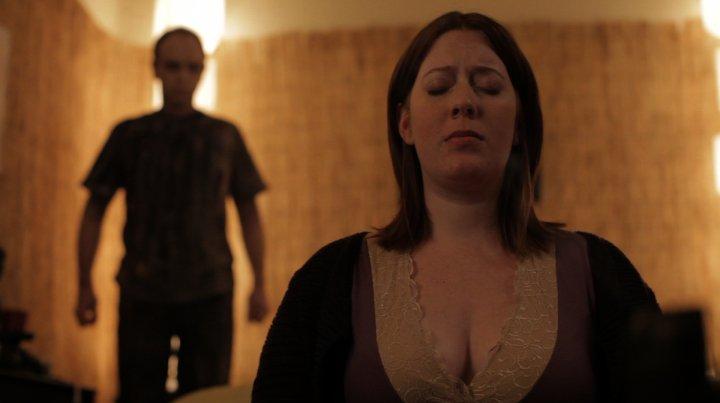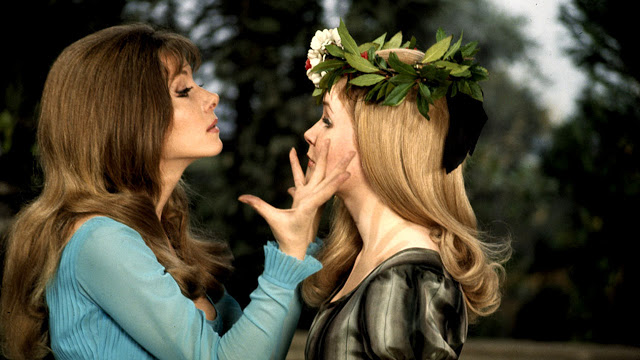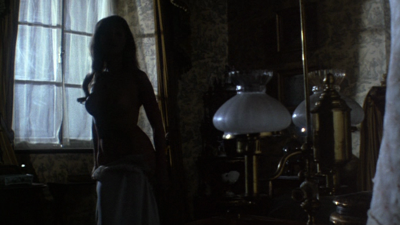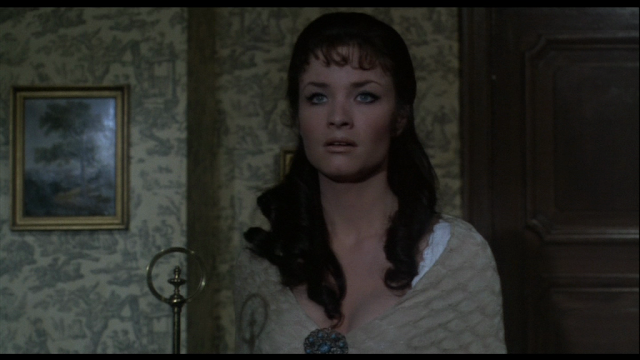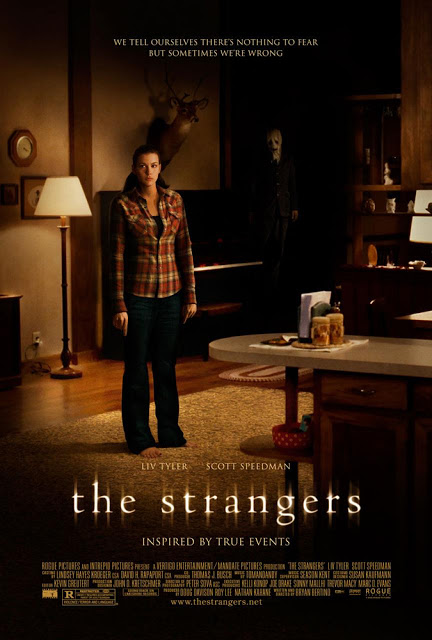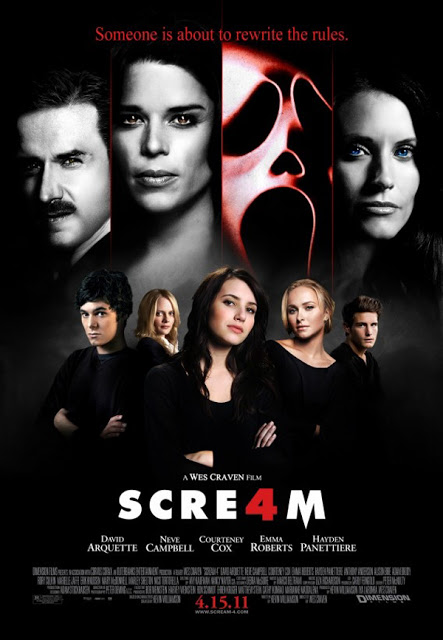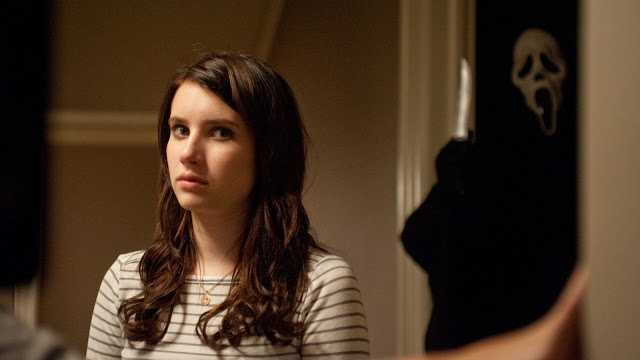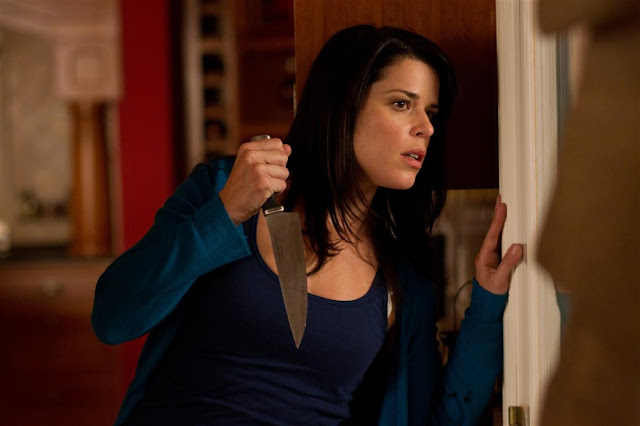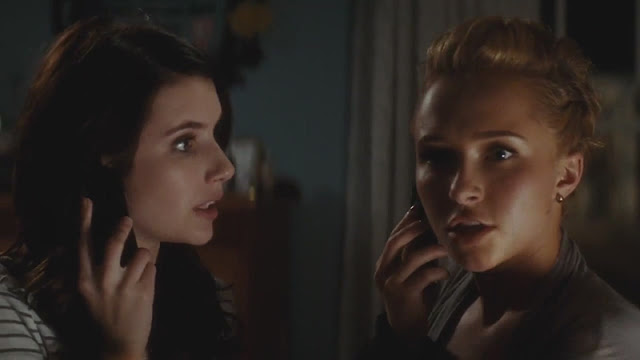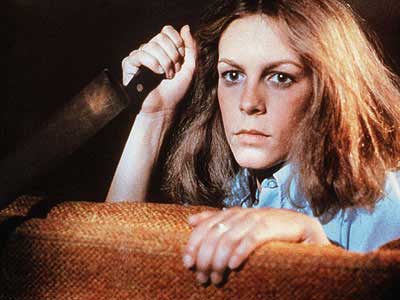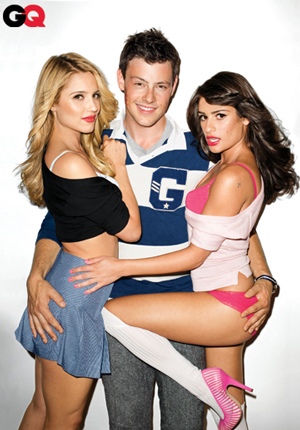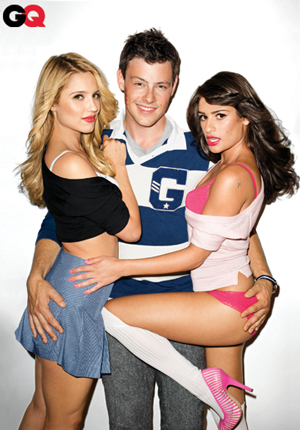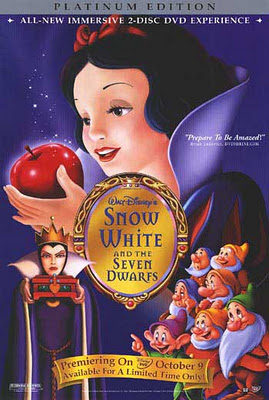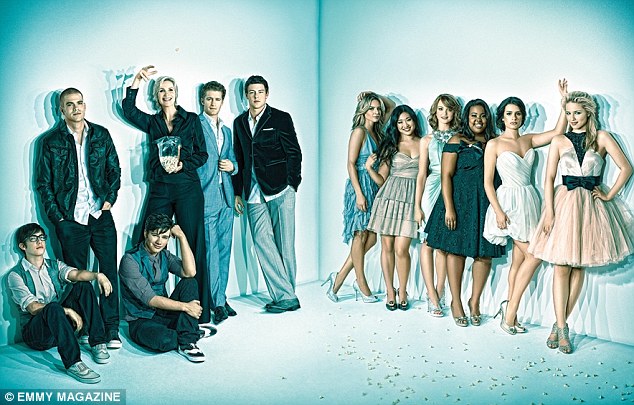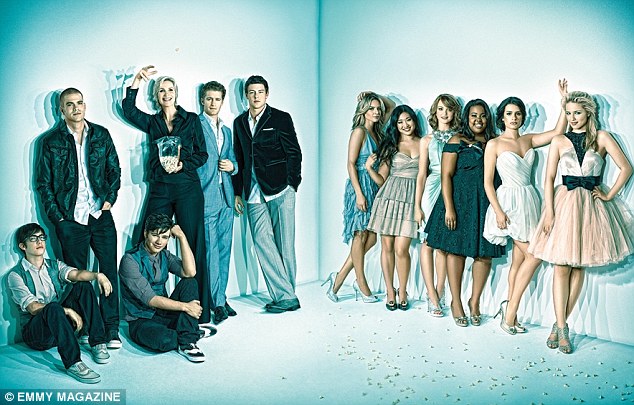Guest post written by Mychael Blinde. Originally published at Vagina Dentwata. Cross-posted with permission.
“What a waste of a perfectly good first act! And what a maddening, nihilistic, infuriating ending!”
“Kind of like what The Shining might be if you took out the ESP. And the ghosts. And the chilling atmosphere. So call it The Sucking.”
But The Strangers totally works for me as both a horror fan and a feminist. Here’s why:
As a horror fan:
The film opens with Kristin (Liv Tyler) and James (Scott Speedman) driving to his parents’ rural summer home in uncomfortable silence. We learn that they have come from a friend’s wedding, at which James proposed to Kristen. Kristen has rejected his proposal, not because she doesn’t love James, but because she isn’t ready to get married.
The sense of discomfort and unease we feel at the couple’s awkward, painful situation transforms into a sense of fear and alarm with a loud knock on a large door at 4 in the morning. We are emotionally invested in the characters when the shit starts to go down — and boy does shit go down. But The Strangers takes its time.
The cinematography contributes to the film’s tone of discomfort: the camera is never steady, and the subtly shaky hand held shots jostle the viewer. Director Bryan Bertino makes great use of wide angle shots, forcing the viewer to strain hir eyes looking for the killer in the peripheral screen space.
 |
| Kristin (Liv Tyler) in The Strangers | I spy with my little eye a creepy-as-fuck guy! |
The sound effects are equally disconcerting. The Strangers assaults the audience with banging and crashing, and most terrifying of all, with silence. It insists that its audience listen; diegetic sounds like a repeating record player situate the audience in the film’s world. And in case you had any doubts, Liv Tyler can scream.
The aesthetic has a vaguely 70s feel (the car, record player), but
The Strangers dates itself as late 00s by the two silver flip cell phones. The 70s props and look, paired with the strong sense of rural-areas-are-scary-places-full-of-psycho-killers urbanoia and the masked* assailants call to my mind
The Texas Chainsaw Massacre. But in
The Texas Chainsaw Massacre, it is not the psycho killers who invade the house, but their victims.
 |
| James (Scott Speedman) and Kristin (Liv Tyler) in The Strangers |
The Strangers is a more like
Funny Games: it’s a home invasion horror in which the violence is presented as horrible, inexplicable, and inevitable. Director Michael Haneke created
Funny Games as a reaction to (and criticism of) the Quentin Tarantino style of glamorized violence.
Funny Games explicitly asks its audience to think about why we enjoy watching horrible things being inflicted upon people.
The Strangers doesn’t take things that level of meta cinematic criticism, but it makes its point.
 |
| The Strangers | “Why are you doing this?” “Because you were home.” |
Sometimes humans do awful things to other humans for no reason at all. Violence is always horrific, and sometimes it is senseless and inexplicable. In the wake of the shooting at the screening of The Dark Knight Rises — a movie that certainly falls into the category of stylized violence — the representation of violence as ugly and meaningless in The Strangers resonates strongly with me.
As a feminist:
Kristin is the character with whom we spend the entirety of the film. In the beginning, while James goes to get her more cigarettes, and later when he stupidly breaks the first rule of surviving a horror film and goes off on his own, the audience stays with Kristen.
Not only is she the film’s protagonist, she’s a woman who is not presented as a helpless idiot. When the shit gets real, she puts on pants.
The screenplay makes a point of establishing Kristin’s affinity for her bridesmaid’s dress. After the couple arrives at the house Kristin, takes a bath, and instead of changing into sleepwear she puts on her dress again. She explains to James that this is the only day she gets to wear it, and says, “It makes me feel pretty.”
 |
| Kristin (Liv Tyler) in The Strangers |
Director Bertino could have easily left Liv in her flimsy pink dress for the duration of the film.** Not only would this have accentuated her vulnerability, it would have offered ample opportunity to include titillating look-how-sexy-she-is-while-she’s-being-attacked shots.
But Bertino opts not to portray violence as sexy. When masked weirdos attack, pretty is not a priority; Kristin doesn’t hesitate to change into something more sensible for combating psychotic murderers: pants!
It is Kristin who loads the shotgun after James confesses he’d lied about going hunting with his father and doesn’t know how to work it. Ultimately, James fires the gun, but by loading it Kristin proves she isn’t an incompetent damsel-in-distress. Throughout the film she strives to fight back.
 |
| Kristin (Liv Tyler) in The Strangers |
In
Men, Women, and Chainsaws, Carol Clover identifies a film trope common to the horror genre: the
Final Girl, the last woman left alive who ultimately wields the metaphorical phallus and kills the monster.
The Final Girl phenomenon is problematic because it is predicated on society’s sexist notion that women are the weaker sex. But scream time results in screen time, and while watching a movie like The Strangers, with whom is the viewer being asked to identify? The masked maniac? Or the woman frantic to survive? (Hint: it’s not the maniac.)
The character of the Final Girl offers women a chance to play protagonists in films marketed to men, which offers men the chance to identify with female characters. Which is awesome.
Kristin doesn’t exactly fit the requirements for Final Girl status, but she is the character with whom viewers of The Strangers are encouraged to identify, and she is presented as woman who is neither stupid nor incompetent.
Yes, The Strangers is derivative. Films about home invasion have been made before, and a movie about a woman being terrorized by a masked assailant isn’t exactly original. But in spite of its myriad predecessors, The Strangers manages to keep things creepy as fuck — all without resorting to tired sexism or misogyny.
* * *
*“Dollface,” “Pin-up Girl,” and “Man in the Mask.” What do you make of the way the masks gender the assailants?
**Liv does end up back in that pink dress in the film’s bleak climax, but she is never sexualized.
———-
Mychael Blinde is interested in representations of gender and popular culture and blogs at Vagina Dentwata.
